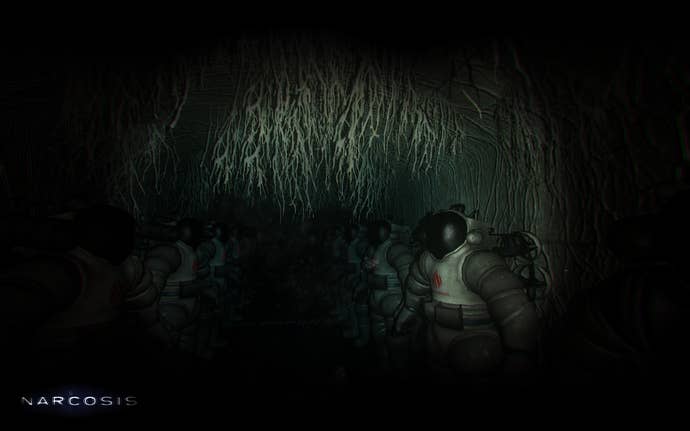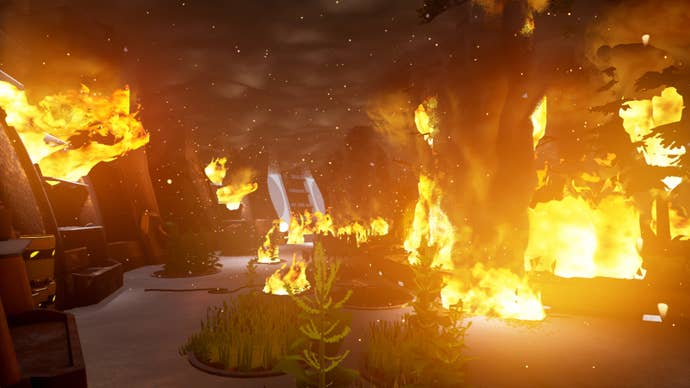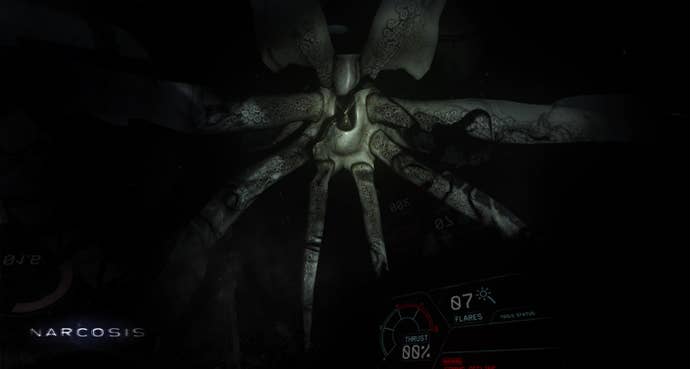It's 1995 All Over Again for the Creators of VR Titles Like Narcosis and Loading Human
How can adventure game work for VR? How about horror? Narcosis and Loading Human want to figure it all out.
This article first appeared on USgamer, a partner publication of VG247. Some content, such as this article, has been migrated to VG247 for posterity after USgamer's closure - but it has not been edited or further vetted by the VG247 team.
It's 1995 all over again for developers working on VR.
The painstaking progress in developing workable 3D cameras and controls have all but been erased with PlayStation VR and Oculus on the scene. It's like we've gone back 20 years to the early day of the PlayStation 1, when developers were working with 3D cameras for the first time. Developers now have to ask themselves basic questions like, "How can we make it easy to interact with objects?" and "How can we make it so people can play for an extended period of time without throwing up?"

Loading Human and Narcosis are asking these questions for the adventure genre and horror genres respectively, and they're coming up with very different answers.
Loading Human, for its part, is the brainchild of Italian movie director Flavio Parenti, who was attracted to games in part by the possibilities afforded by VR. In his story, an episodic sci-fi adventure game, you are summoned to an antarctic research base by your father - a genius scientist on his deathbed. He wants to travel into deep space and retrieve Quintessence, a unique energy that may save his life.
Parenti's goal is to put you in the mind of his protagonist. His game is one of the few "full-body experiences" in which you can look down and see arms, legs, and a torso. Object manipulation is carried out with the PlayStation Move, which stands in for arms and hands as you reach out grasp items like an axe and a fire extinguiser, or reach down to pull up a character you need to rescue.
Its an ambitious effort, and realizing its potential has been challenging for Parenti and his team. In particular, they've had to grapple with an issue that has become common for VR designers - motion sickness. The simple act of walking around and turning in-game messes with the inner ear, leading to vertigo and nausea. Loading Human's solution is to eliminate the actual rotation and substitute it with a kind of point-and-click interface.

It's an interesting solution, but also an awkward one. Having long ago become accustomed to turning with a right analog stick, using a pointer to turn felt awkward and retrograde. It mostly worked, though: I didn't get sick.
The same could not be said for Narcossis - a VR horror game that has earned plaudits for its intense atmosphere and sense of claustrophobia. A wave of vertigo came crashing down on me almost as soon as I put on the Oculus Rift - a feeling that wasn't helped by the fact that I was overheating in the goggles, causing my glasses to fog up and obscure my vision. Finally, right before lamprey-like creature lunged for my face (ugh), I had to pull off the goggles to regain my equilibrium.
The motion sickness issue is disappointing, since in other ways Narcosis really works. It brings with it a sense of being trapped underwater - a feeling amplified by your limited oxygen, which must be periodically replenished. Its developer, self-described Franco-Californian collective Honor Code, wields primal fears like darkness and claustrophobia to great effect while being at pains to avoid being "too" intense. It works because Honor Code wisely keeps it mechanics relatively simple, with a traditional gamepad being used to activate thrusters and toss flares, and objective interaction being a traditional button prompt.

Loading Human wants to go much further, but its apparent that it still has some kinks to work out. As I worked to pick up an axe with my PlayStation Move controllers, I felt like my arms were floating underwater. At one point, my arm seemed to shift so it looked like it was coming out of my chest. Waiting for my "hands" to lock into an object so I could pick it up or use it was awkward in the extreme. And then there was the incredibly weird disconnect that came with looking down and seeing a man's body.
I actually wound up ending the demo early because I was beginning to overheat inside the mask. Afteward, I learned that the demo ends with you kissing the woman you rescue, which is apparently an odd sensation - almost like she's invading your space. I was more fixated on the fact that maneuver my arm to hold her hand was like grasping a wet noodle.
In any case, one thing is clear - it's still early days for the technology that Sony, Oculus, and HTC are touting as the "next big thing." Developers are still feeling out the game design possibilities, and they're still grappling with basic challenges like avoiding motion sickness. In that, I sort of feel like buying a VR headset will be like buying a very, very early DVD player. Games like Narcosis and Loading Human have some very interesting ideas, but also plenty of kinks to work out.
Uncharted territory is exciting territory, though. With new challenges comes new opportunities for developers like Honor Code. I look forward to seeing what the ultimately come up with.









